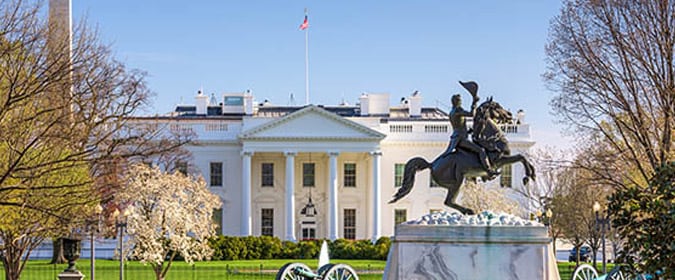
By Cam Ellis, Special to the Alliance
As President Trump’s administration reaches the 100th day in office, historically considered the first benchmark in evaluating a President’s success, his war with the media rages on as fervently as ever. With that in mind, journalists from all over the country came together this morning to discuss the wide-reaching and visible effects that President Trump’s administration has on not only journalists, but the industry as a whole.
Today’s panel featured four experts on both the Trump administration and the journalism field: Alfredo Carbajal, Managing Editor, Al Día / Dallas Morning News, Jonathan Martin, National Political Correspondent, The New York Times, Amalie Nash, Executive Editor, West Region, USA TODAY NETWORK, and Tom Rosenstiel, Executive Director, American Press Institute.
The panel was moderated by Mizell Stewart III, VP of News Operations, USA TODAY Network and Vice President on the Board of Directors at American Society of News Editors.
Martin started off the discussion by bringing up the unique challenges that face political correspondents. The pressure they’re facing, however, is nothing new. “It is the culmination of a half-century long campaign to delegitimize the media,” he said. “That has been a trend that has only growing. The grand irony is that Trump knows the media isn’t dishonest.”
As Carbajal put it, during the Trump campaign, “Policy, issues, ideas were not discussed in the traditional way we cover campaigns.” It was a unique experience that left a profound ripple effect in the industry.
“Trump operates at a different level,” Rosenstiel said. “He understands that he can communicate to voters without being literally accurate on the facts. There’s a power to being an unreliable narrator. Will he or won’t he? Does he or doesn’t he? That focuses the attention, and mystery, around him”
The conversation then shifted into a discussion into how they could adapt and practice the smartest techniques in regaining a distrustful audience.
“There are two groups that are particularly distrustful of the press,” Rosenstiel said. “The first is Republicans, and the second is millennials. These are both groups that we need to understand better in order to increase engagement. It’s going to become an economic challenge for us soon if we can’t.
“Part of our job is not just to cover the President, but to help understand what’s going on over the next hill. We’re struggling with that part of the job.”
They also discussed the role that local news plays in national politics. “I’m interested in the role of editorial boards and editorials on the local level when it comes to national politics,” Nash added. “Our editorial boards tend to lean left – during the election, papers in Phoenix and Cincy broke tradition by endorsing Hillary Clinton. For many in both cities, those endorsements broke trust with the local communities.
“As a result, a lot of people in the community thought the boards didn’t know, of reflect, their views. So, what is the role of an editorial board? Local issues? National issues? Both?”
Lastly, the panel discussed an interesting dilemma: with a President that makes a point of challenging every journalistic norm, do journalists have a responsibility to evolve and meet that change? It’s a complicated question with a nuanced answer.
“A lot of media is in metropolitan areas, which tend to lean more democratic,” Nash said. “This election exemplified the need to get out of those cities and talk to voters. A lot of lessons that came out of that.”
